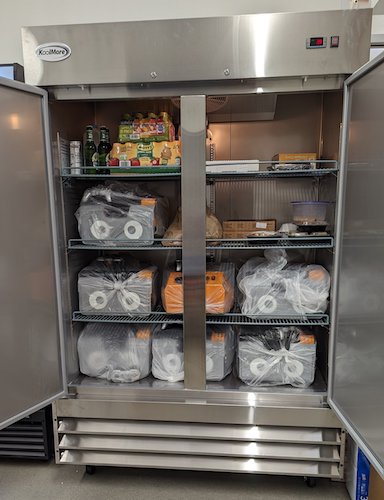|
Listen to this article  |
Editor’s Note: This story was originally published on Tessa Lau’s Twitter feed. We have reprinted it here with Lau’s permission. It details how Dusty Robotics diagnosed and fixed a rare hardware bug on some of its FieldPrinter robots, which can autonomously print full-scale models onto construction surfaces in a fraction of the time it takes a manual layout crew with a chalk line.
About a year ago, we started getting reports from the field about undesirable behavior when our robots were turned on. On rare occasions, they would behave unpredictably. Our engineering and CS team investigated all such reports to try to discover the root cause. Every time a report came in from the field, we’d immediately troubleshoot. We’d bring the robot back in house to try to replicate the failure.
We couldn’t reproduce it, but we did come up with a theory for why it was happening. It was the coupler that connected the motor to the wheel. If this came loose, the wheel wouldn’t turn when it should, and the robot would drive unpredictably.
So we redesigned the coupler system so that it wouldn’t slip under normal operation, and rolled out the fix to all robots. With many in customers’ hands, it took a while to cycle through them all.
We also developed a field fix that involved taking the robot apart and tightening the coupler. The next time a customer called in with this problem, we had them apply this fix. And it worked! Problem solved.
Fast forward to 2022. Last month, we started getting reports again of robots behaving erratically in the field. Again we brought the robots back in house and again couldn’t reproduce the behavior.
This must be a new problem, we thought. After all, we had fixed the couplers and hadn’t had any coupler-related issues for the past 9 months. Our team started systematically debugging all other possible causes.

Dusty Robotics put several of its FieldPrinter robots into a refrigerator to help diagnose a hardware bug. | Credit: Dusty Robotics
We assigned an intern to try to reproduce the problem. Since it seemed to happen first thing in the morning, maybe it was related to the power-up sequence. The intern turned off and on a robot hundreds of times. It never showed the problem.
Then someone had the brilliant idea to put a robot in the fridge. We pulled it out the next morning, and … it exhibited the problem. For 10 minutes. Then it stopped. Could it have something to do with temperature?
But not all robots exhibited the behavior after being refrigerated. And 10 minutes didn’t give us a lot of time to debug before the problem went away. So we filled the fridge with robots and took them out one by one to experiment on. The kitchen became an OR, with robot cadavers spread out on operating tables.
Some of the experiments involved measuring what was happening inside the bot while it was cold. At one point I found a scope outside the fridge, measuring the vitals of the patient inside.
Finally, we discovered the problem. One of the off-the-shelf components we use behaved out of spec at certain temperatures, generating a noisy signal. We reverse-engineered the component and found that removing two resistors fixed it. Problem solved, for real this time.
Turns out that last year’s coupler problems had the same root cause. While people were opening up the robot and tightening the coupler, the robot would warm up. By the time they put it back together, the problem would have gone away. It had nothing to do with couplers at all.
By the time we had rolled out the coupler “fix” to all robots, the weather had warmed up enough across the country that the issue didn’t reoccur. We thought we had fixed it, when actually spring fixed it.
When you realize that there are hundreds of components in the simplest robot, and each one can have unpredictable failure modes like this one, that’s why hardware is hard.

About the Author
Tessa Lau is an experienced entrepreneur with expertise in AI, machine learning, and robotics. She is currently the CEO and founder of Dusty Robotics, which develops robot-powered tools for the modern construction workforce. Prior to Dusty, Lau was CTO/co-founder at Savioke, where she orchestrated the deployment of 75+ delivery robots into hotels and high-rises.
Previously, she was a research scientist at Willow Garage, where she developed simple interfaces for personal robots. Lau also spent 11 years at IBM Research working in business process automation and knowledge capture. She was recognized as one of the Top 5 Innovative Women to Watch in Robotics by Inc. in 2018 and one of Fast Company’s Most Creative People in 2015. She holds a PhD in Computer Science from the University of Washington.
Credit: Source link


Comments are closed.